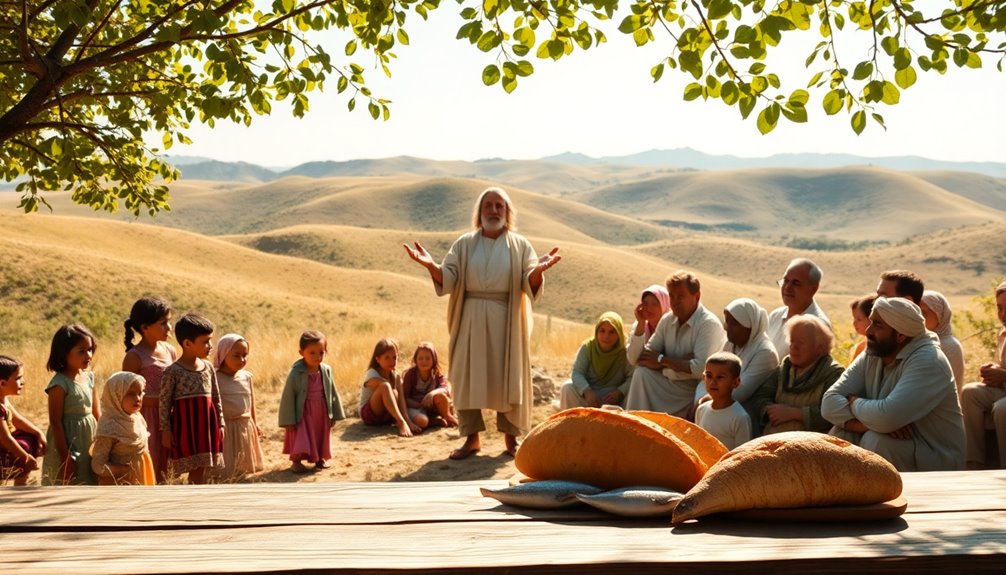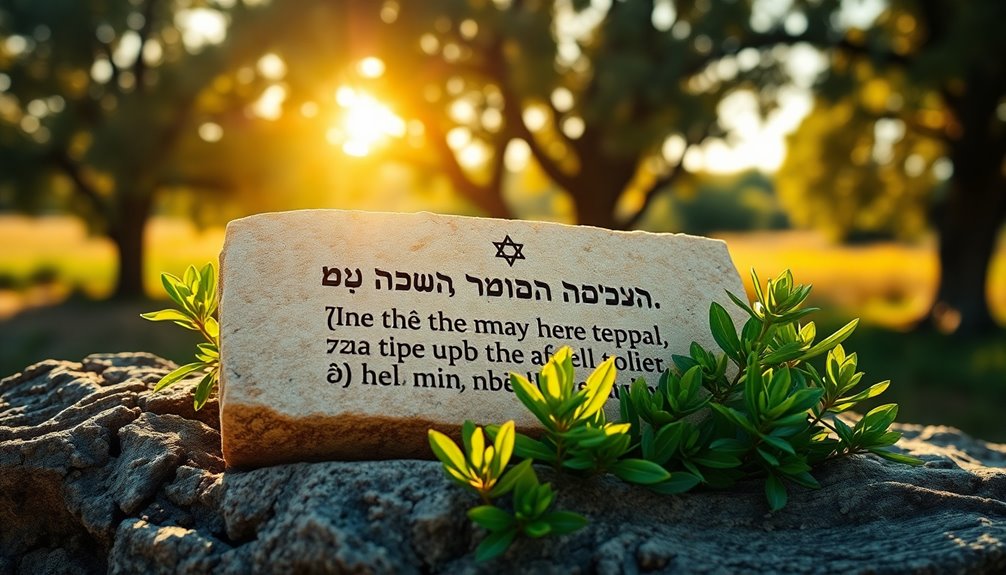Nimrod's a fascinating figure in the Bible, described as a "mighty hunter" and a powerful ruler from Genesis 10:8-10. He's recognized as the great-grandson of Noah, establishing a kingdom in Shinar that included cities like Babel and Nineveh. Nimrod's ambition is also tied to the Tower of Babel, symbolizing humanity's pride and desire for greatness. Although some view him as a tyrant, his dual legacy teaches valuable lessons about leadership, ambition, and humility. If you explore further, you'll uncover the complexities of Nimrod's character and his lasting impact on biblical narratives and ancient history.
Key Takeaways
- Nimrod is described in Genesis 10:8-10 as a "mighty hunter" and a significant ruler after the Flood.
- He established a kingdom in Shinar, founding cities like Babel, Nineveh, and Calah.
- His ambition is linked to the Tower of Babel narrative, symbolizing human pride and defiance against God.
- Nimrod is viewed as both a revered leader and a potential tyrant, illustrating the complexities of leadership.
- His legacy serves as a warning about the dangers of unchecked ambition and the importance of moral integrity in leadership.
Introduction

Nimrod, a figure shrouded in mystery and intrigue, appears prominently in the Bible as a symbol of power and ambition. You might first encounter him in Genesis 10:8-10, where he's described as "a mighty one on the earth." This designation highlights his prowess as a hunter and warrior, setting him apart in the early narratives of civilization.
As the great-grandson of Noah, through his son Cush, Nimrod represents a crucial link to humanity's progression post-Flood. His kingdom began in the region of Shinar, encompassing notable cities like Babel, Erech, Akkad, and Calneh. These cities reflect his substantial influence in the formation of early Mesopotamian societies.
The name "land of Nimrod," as mentioned in Micah 5:6, indicates the historical significance he held in that region. Furthermore, Nimrod is often associated with the Tower of Babel, where his ambition and defiance against divine authority are legendary.
This narrative not only showcases his desire for greatness but also represents a pivotal moment in biblical history, illustrating the complexities of human ambition and the consequences that follow.
Biblical Texts on Nimrod
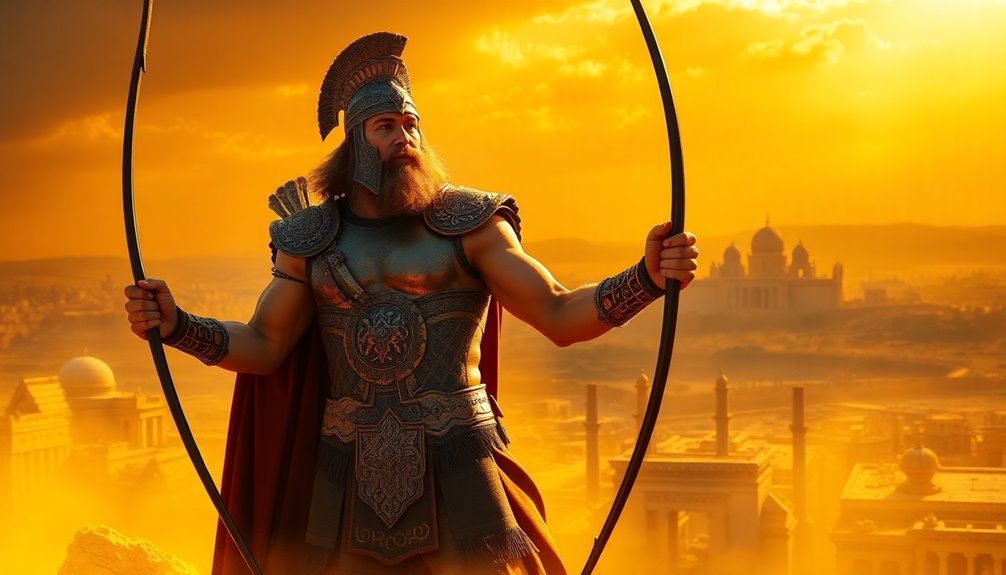
When you look at the biblical texts on Nimrod, you'll find key references that highlight his significance.
Genesis 10:8-12 introduces him as a mighty hunter and the first great ruler post-Flood, establishing his legacy in regions like Babel and Nineveh.
Additionally, passages in Micah and 1 Chronicles further illustrate his influence and status in biblical history.
Primary Bible References
In the Bible, several key passages spotlight Nimrod, illustrating his significant role in ancient history. You'll find him mentioned in Genesis 10:8-12 as a mighty warrior and hunter, described as a "mighty one." This passage also outlines his founding of a kingdom in Babel, Erech, Akkad, and Calneh in the land of Shinar.
Genesis 10:10 further reveals that Nimrod's kingdom expanded into Assyria, where he built major cities like Nineveh, Calah, and Resen.
Nimrod's influence doesn't stop there. In Micah 5:6, the "land of Nimrod" is identified with Assyria, suggesting his impact reached beyond Babylon. Additionally, 1 Chronicles 1:10 reiterates his status as a mighty warrior, emphasizing his prominence in the genealogies of Noah's descendants.
While the biblical texts present Nimrod as a formidable figure, interpretations vary, particularly regarding his connection to the Tower of Babel.
Though he's often associated with rebellion against God in external traditions, the direct biblical references focus on his achievements and the kingdoms he established, leaving much to ponder about his legacy.
Secondary Bible References
Although the primary biblical references to Nimrod provide a foundational understanding of his character, secondary texts further enrich our perspective on this intriguing figure.
In Genesis 10:8-12, you see Nimrod described as a mighty hunter, establishing civilizations in the land of Shinar, which includes significant cities like Babylon and Erech. His role as a biblical figure is further emphasized in 1 Chronicles 1:10, reiterating his reputation as a mighty warrior and reinforcing his legacy in genealogies.
Micah 5:6 mentions the "land of Nimrod," linking him to Assyria and showcasing his importance in ancient geography. This connection illustrates how his influence extended beyond the cities he founded.
While Nimrod is often associated with the Tower of Babel, the biblical text doesn't explicitly mention his involvement in its construction. However, historical interpretations frequently tie him to this monumental event, suggesting he played a key role in the early defiance against divine authority.
As a great-grandson of Noah, Nimrod's lineage places him in a significant position shortly after the Flood, shaping the world in profound ways.
Ancient Mesopotamian City-States
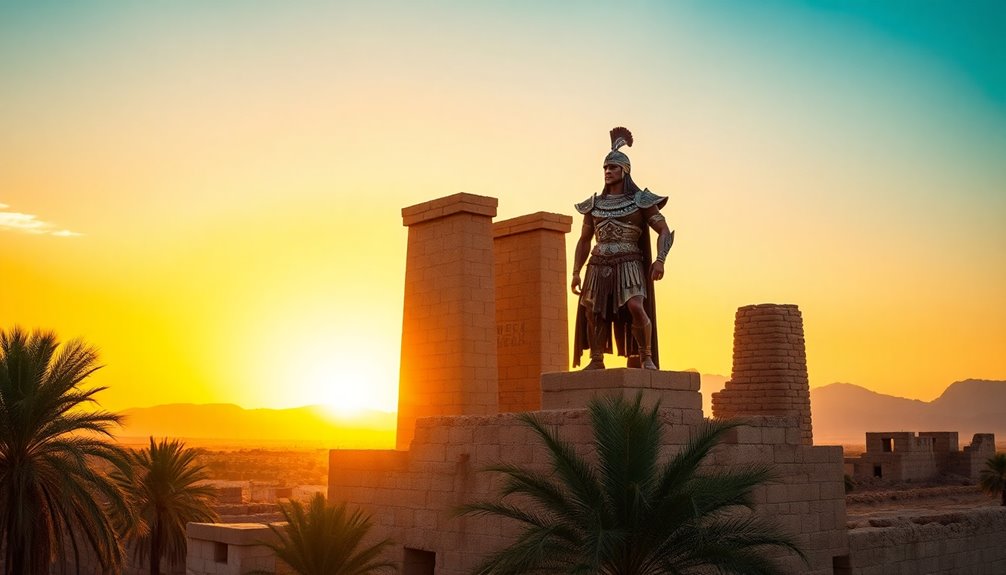
Ancient Mesopotamian city-states, like Babylon and Uruk, laid the groundwork for modern civilization. Emerging around 3000 BCE, these city-states, including Akkad, thrived between the Tigris and Euphrates Rivers. The region's fertile land allowed for successful agriculture, leading to surplus production that supported urbanization and a growing population.
You'd notice that each city-state had its own distinct social structure and centralized government, reflecting the complexity of ancient Mesopotamia. Temples served as both religious and political centers, where rulers were often seen as representatives of the gods.
Nimrod, a significant figure in this context, is often associated with these powerful city-states. His legacy intertwines with the emergence of urban life following the Great Flood, when people began to build and establish communities.
Trade networks flourished among these city-states, enabling the exchange of goods, ideas, and cultural practices. This interconnectedness fostered advancements in writing, mathematics, and architecture, setting the stage for the rich tapestry of civilization that would follow.
As you explore the achievements of ancient Mesopotamia, you can appreciate how these city-states shaped human history.
Nimrod's Role as a Hunter

Nimrod stands out in the Bible as a legendary figure known for his extraordinary hunting skills. Described as a "mighty hunter before the Lord," biblical Nimrod's prowess in hunting not only showcases his physical abilities but also hints at a rebellious nature against God. His reputation as a hunter reflects strength and authority, making him a significant figure in the early urban development of Mesopotamia.
In this context, you can see how Nimrod's hunting skills contributed to the establishment of society, as they provided essential resources for survival and growth. His ability to hunt effectively may symbolize his leadership qualities, reinforcing his status among his peers.
The phrase "mighty hunter" has transcended the biblical narrative, becoming proverbial in discussions of both hunting and leadership throughout history.
As you delve into Nimrod's life, consider how these hunting abilities shaped not only his legacy but also the communities that emerged during that era. His role as a hunter before the Lord illustrates the duality of his character—both revered and possibly viewed with suspicion in the eyes of God.
Nimrod's Identity as a King
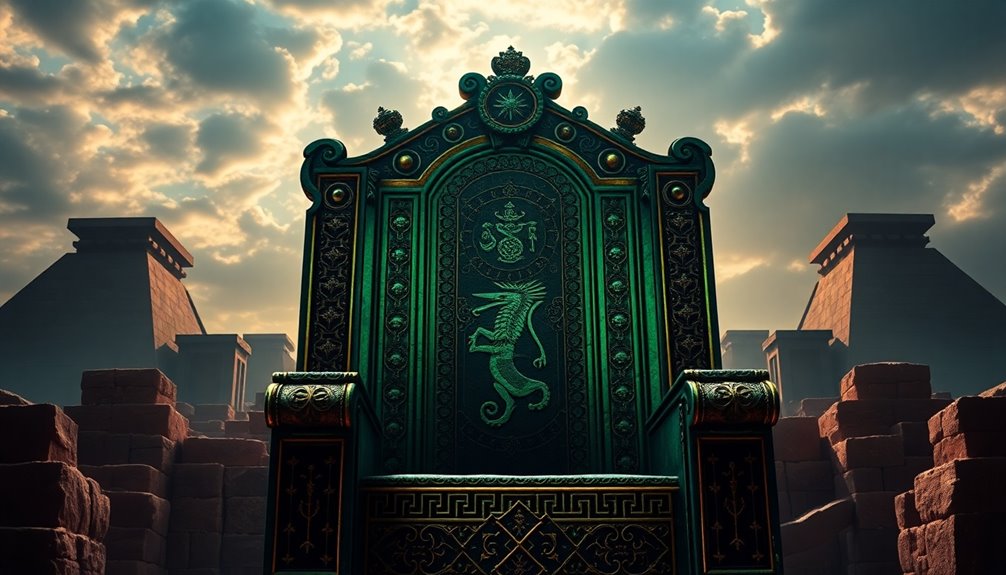
When you consider Nimrod's identity as a king, it's essential to challenge the notion of him as a purely villainous figure.
While some historical accounts paint him as a tyrant, others highlight his achievements in building cities and expanding civilization.
This contradiction raises questions about how we interpret his legacy in both the biblical narrative and history.
Debunk Nimrod's Villainous Reputation
The image of Nimrod as a villain often overshadows his true identity as a prominent king in the Bible. Described as a "mighty hunter before the Lord" in Genesis 10:9, Nimrod's prowess highlights his significance rather than any supposed malevolence. His kingdom, which began in Babel, extended to important cities like Nineveh and Calah, showcasing his role in early urban development in Mesopotamia.
The title "mighty one" in Genesis 10:8-10 suggests strength and leadership, contrasting sharply with later interpretations that label him a tyrant. While historical figures like Josephus painted him as rebellious, the biblical text doesn't explicitly label Nimrod as evil, allowing room for varied interpretations.
This ambiguity is crucial, as it emphasizes that the narrative surrounding Nimrod has evolved through cultural legends, often undermining his accomplishments. Instead of focusing solely on negative portrayals, you should recognize Nimrod as a king who contributed to the establishment of significant ancient civilizations.
Contradictory Historical Accounts
Nimrod's identity as a king is wrapped in layers of historical ambiguity, making it challenging to pin down his true role in ancient Mesopotamia. While the Bible paints him as a mighty hunter and ruler whose kingdom began in Babel, Erech, Akkad, and Calneh, the historical accounts surrounding him are contradictory.
Some scholars link Nimrod to figures like Euechoios of Chaldea and Enmerkar, yet no definitive evidence ties him to a specific historical king.
The ambiguity in the biblical text further complicates matters. It remains unclear whether Nimrod or Ashur built significant cities like Nineveh, leading to conflicting interpretations of his authority.
Furthermore, some suggest that Nimrod's narrative reflects the conquests of later Assyrian kings, muddling his identity as a singular historical figure.
The lack of direct evidence for Nimrod in non-biblical records underscores the challenges you face in tracing the reality of his kingship.
This uncertainty leaves you pondering whether Nimrod truly existed as a distinct ruler in the kingdom of Babylon or if he's merely a composite of various ancient leaders in the rich tapestry of Mesopotamian history.
Leadership Lessons From Nimrod
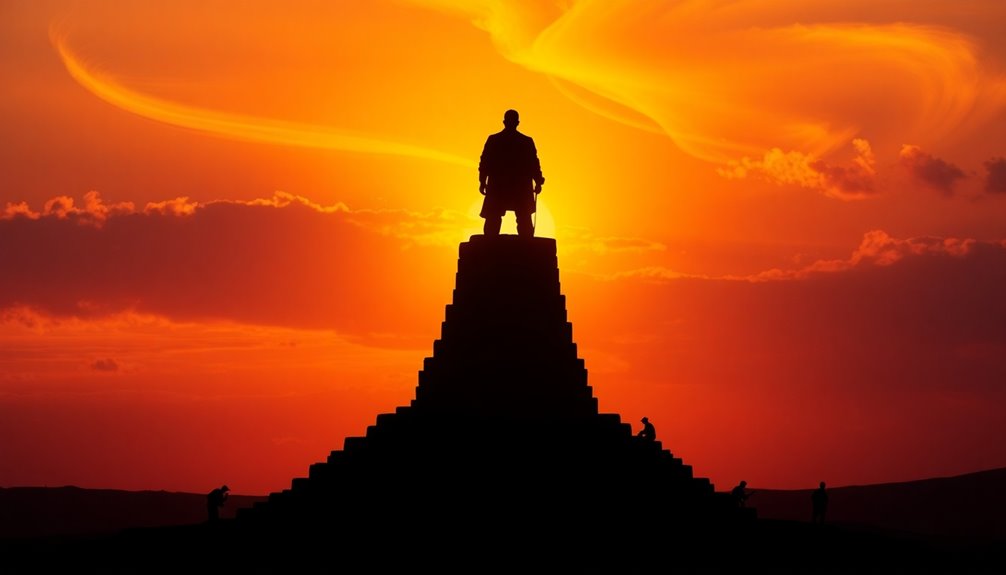
When you look at Nimrod's story, it offers important lessons about leadership, especially in tough times.
His ambition and pride remind you that true leadership isn't just about power, but also about humility and serving your community.
Leadership in Challenging Times
In challenging times, effective leadership often demands a blend of vision, ambition, and humility, qualities that Nimrod embodied in his quest to establish one of ancient Mesopotamia's first kingdoms. His mighty ambition led to the construction of significant cities like Nineveh and Babylon, showcasing how infrastructure can be pivotal in overcoming adversity.
However, Nimrod's legacy also serves as a cautionary tale about the perils of pride and rebellion against divine authority. As you navigate your own leadership journey, consider the lessons from Nimrod's story. His role in the Tower of Babel narrative highlights the dangers of overreaching ambition. Instead of fostering unity, his actions resulted in division, reminding you that collaboration is essential for sustained success.
Moreover, the conflict between Nimrod and Abraham underscores the importance of moral integrity. Aligning your actions with ethical principles is crucial, especially when faced with challenges.
Embrace the vision and ambition necessary for leadership, but don't forget the humility that keeps you grounded. In tough times, remember that true leadership isn't just about power; it's about creating a legacy that reflects your values and encourages others to rise together.
Community Leadership Principles
Great leaders often inspire their communities through a combination of ambition and ethical responsibility. Nimrod exemplifies this principle, having established a vast kingdom with major cities like Babylon and Nineveh. His vision and determination illustrate how ambition in leadership can drive community development.
However, it's important to remember that ambition must be balanced with humility. Nimrod's legacy serves as a cautionary tale about the dangers of pride and rebellion, reminding you to stay grounded and aligned with ethical standards to avoid a downfall.
Nimrod was also known as a "mighty hunter," highlighting the significance of skill and expertise in leadership roles. By harnessing your strengths, you can inspire and guide your community effectively.
The construction of the Tower of Babel under his influence symbolizes the necessity of unity and collaboration in leadership. Though their intentions were misguided, the collective effort reflects the power of a community striving toward a common goal.
Ultimately, Nimrod's narrative encourages you to balance ambition with accountability. True strength in leadership lies not only in personal power but also in fostering a just and respectful society where unity prevails.
Nimrod's Legacy in Leadership
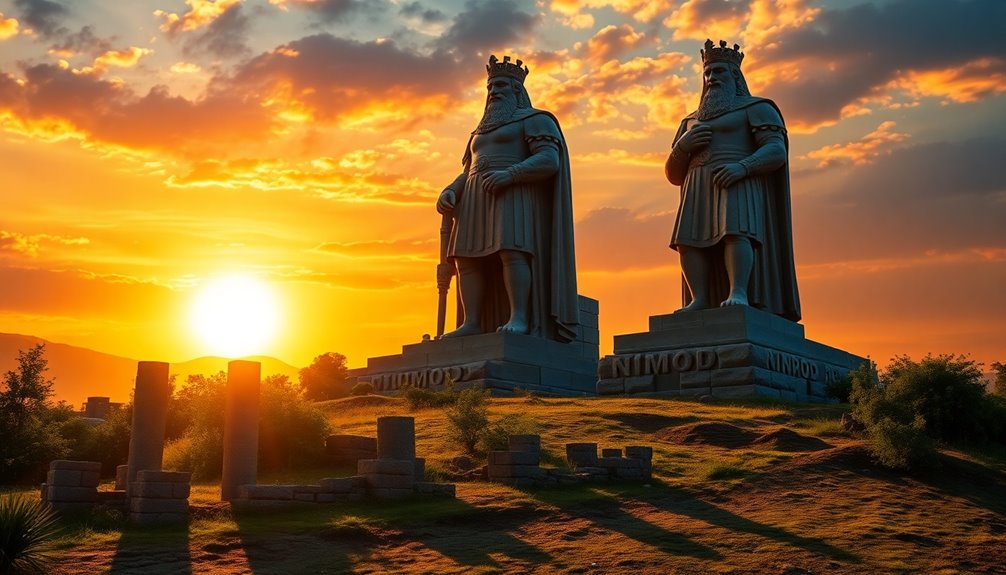
Nimrod's legacy in leadership is both fascinating and cautionary, revealing the complexities of power in ancient times. As a powerful leader, Nimrod established a kingdom in Mesopotamia, founding notable cities like Babylon, Erech, and Nineveh. His reputation as a "mighty hunter before the Lord" symbolizes not just physical strength but a form of leadership that inspired both admiration and fear. This duality is crucial to understanding the impact of his rule.
Nimrod's ambition is most evident in his association with the Tower of Babel, where his desire to build a monumental structure reflects a defiance against divine authority. This act of rebellion illustrates the potential consequences of unchecked leadership, as historical interpretations often depict him as a tyrant. His legacy serves as a warning about the dangers of pride and the pitfalls of seeking power without regard for higher principles.
The narrative of Nimrod's confrontation with Abraham further underscores the contrast between secular and divine leadership, highlighting the foundational conflict between polytheism and monotheism.
Ultimately, Nimrod's story remains a powerful reminder of the complexities surrounding ambition in leadership.
Additional Resources

Exploring the story of Nimrod can deepen your understanding of leadership themes in the Bible. To further your insight, consider diving into Genesis 10:8-12, where Nimrod is introduced as a mighty hunter and a key figure in early post-Flood civilizations. This passage outlines his significance in founding cities like Babel, which is famously linked to the Tower of Babel, showcasing themes of human ambition.
Additional resources include the genealogical records in 1 Chronicles 1:10, highlighting Nimrod's lineage as the son of Cush, a descendant of Ham, and a great-grandson of Noah. These connections provide context about his role in biblical history.
You might also explore Micah 5:6, which metaphorically represents Nimrod's land as Assyria, illustrating the geographical reach of his influence.
Historical accounts, such as those by Josephus, offer interpretations of Nimrod's character, depicting him as both a tyrant and a figure of rebellion against God's chosen people.
Engaging with these texts will enrich your understanding of Nimrod's legacy and the complex themes of leadership, ambition, and divine opposition found in the Bible.
Frequently Asked Questions
What Did Nimrod Do in the Bible?
Nimrod's known for his remarkable achievements in ancient history.
You might see him as a powerful leader who founded significant cities like Nineveh and Babylon.
He's often described as a mighty hunter, showcasing his strength and skill.
His legacy involves establishing a vast kingdom, symbolizing human ambition and rebellion.
This ambition reflects a pivotal moment in history, highlighting the tension between human authority and divine will, which continues to resonate today.
Who Built the Tower of Babel and Why?
You might think the Tower of Babel was built by a group of ambitious people seeking to make a name for themselves.
They aimed to reach the heavens, uniting in their efforts to defy what they perceived as limitations. Their goal was to prevent future disasters, like floods.
However, their pride led to divine intervention, where God confused their languages, scattering them across the earth and halting their grand plans.
What Race Was Nimrod in the Bible?
When you think about the concept of race, it's important to consider that historical figures often don't fit neatly into modern classifications.
With Nimrod, for instance, his ancestry connects him to the Cushite lineage, which links to regions in Africa.
However, he also has ties to ancient Mesopotamia, suggesting a blend of cultural influences.
What Is the Lesson of Nimrod?
The lesson of Nimrod teaches you about the dangers of unchecked ambition and pride. It reminds you that striving for power without humility can lead to downfall.
You should reflect on how seeking personal glory often comes at the expense of greater principles. Emphasizing submission to higher authority, the lesson underscores that true strength lies not in dominance but in recognizing your place within a larger purpose and serving with integrity.


